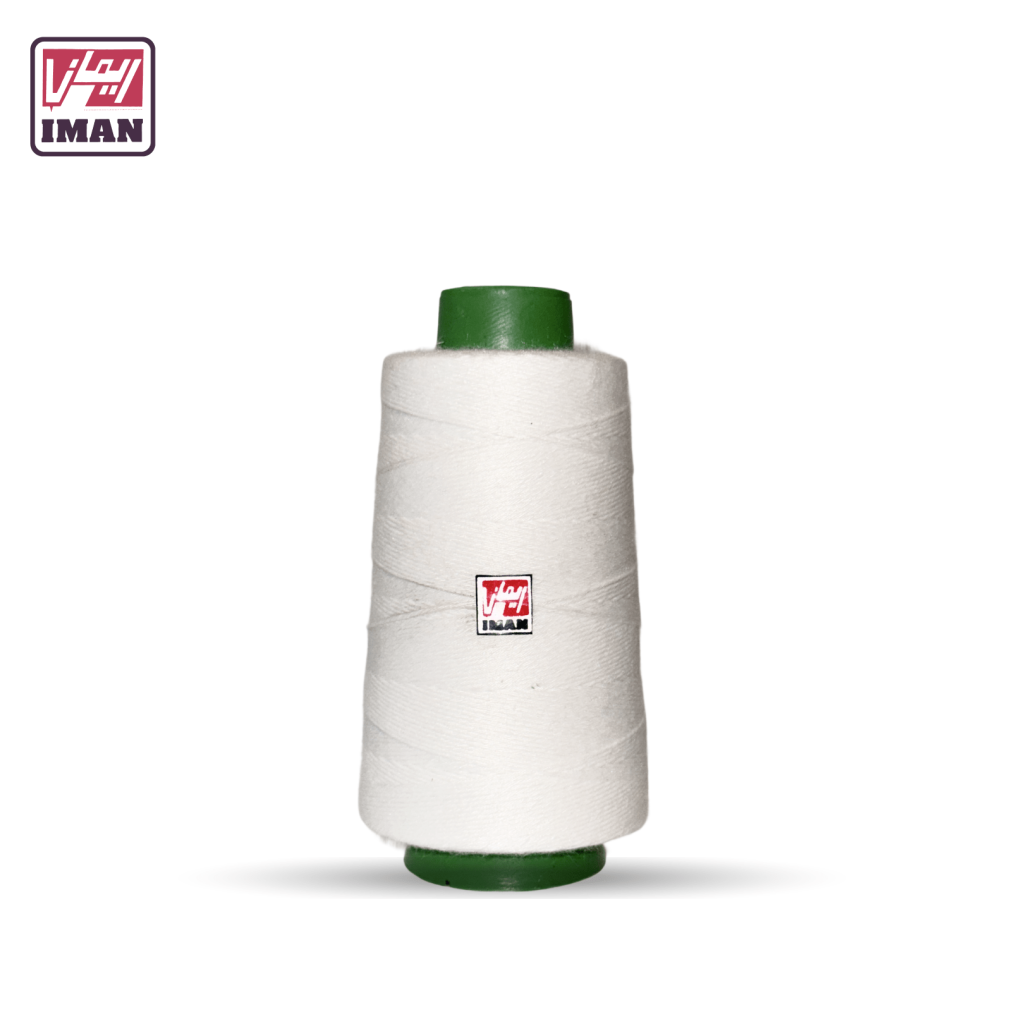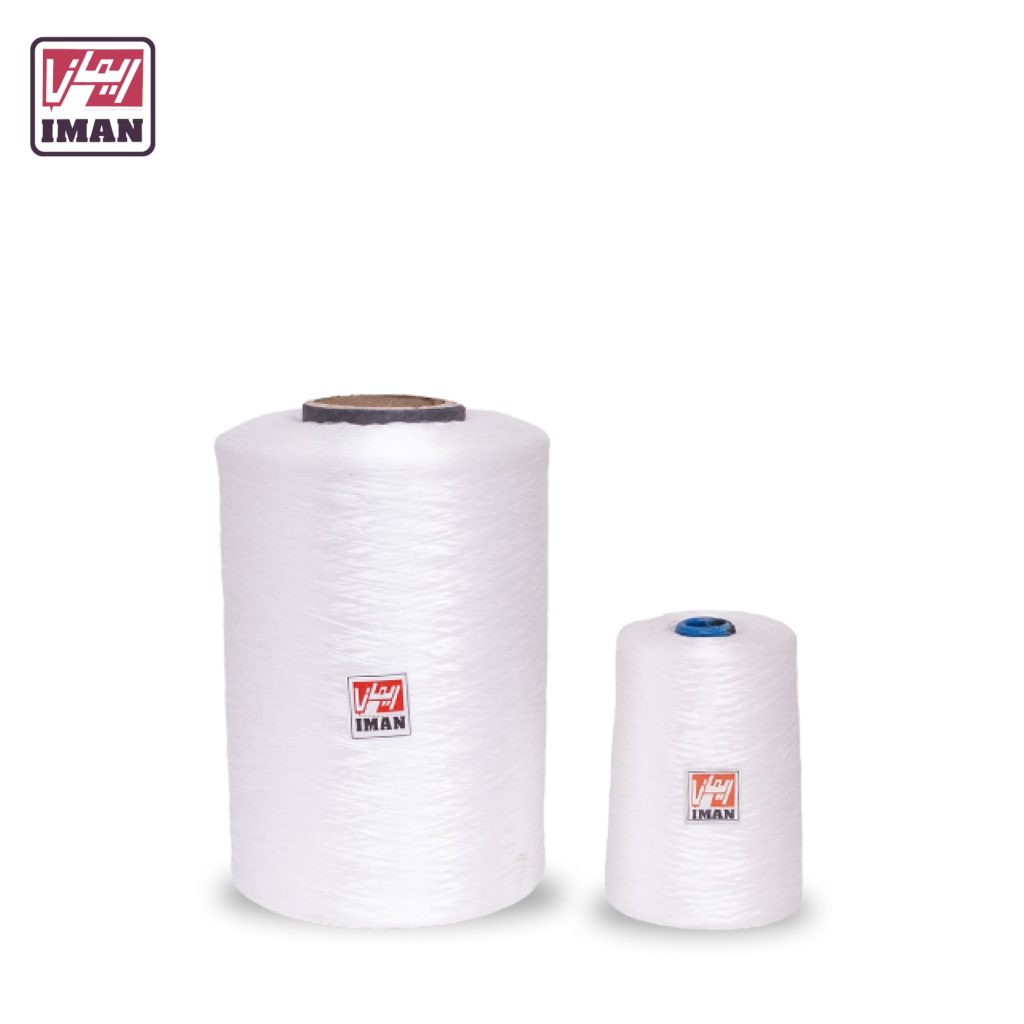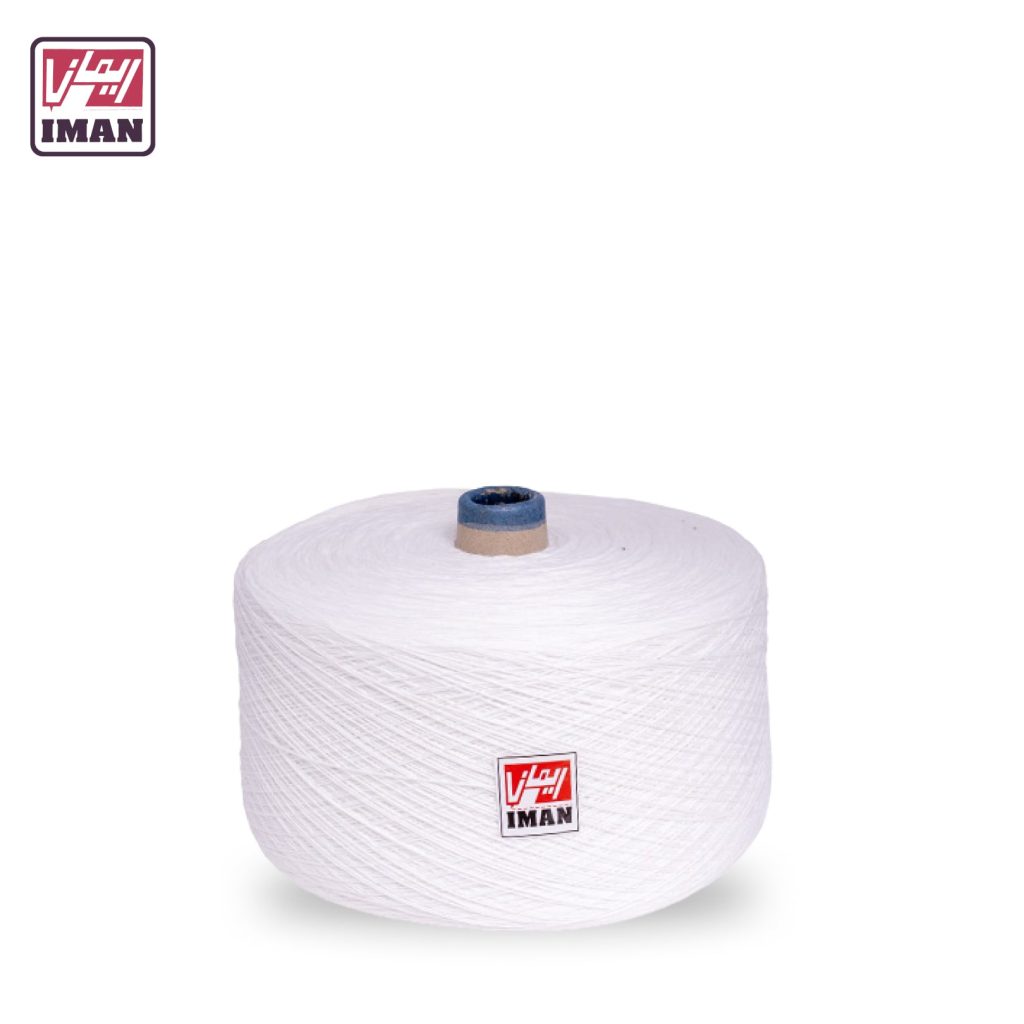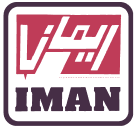Bagging thread is a type of thread used for packaging and sewing various bags and packages. These threads are usually made from various materials such as cotton, hemp, polypropylene and nylon and are very popular and widely used in the packaging and transportation industry due to their special characteristics. These threads are designed in a way that they can meet the needs of different industries and at the same time be economically viable.
It is of great importance in various industries. Due to their unique properties and wide applications, these threads play a very important role in improving the packaging and transportation process of products. The following are some of the main reasons for this importance:
Protection of contents: By creating a strong and reliable packaging, it protects the contents inside the bag from external damage such as pressure, moisture and contamination. This is especially important in the packaging of food, agricultural products and chemicals, as any damage to the contents can have serious consequences.
Increased durability and strength of packaging: By increasing the strength and durability of the bags, it prevents them from tearing and damaging during transportation and storage. This feature allows users to transport their products more confidently.
Savings in costs: The costs associated with packaging and storing products are reduced. These threads require less maintenance and replacement due to their high durability and long lifespan, which helps save money.
Environmentally friendly: Many bag strings are made from recyclable and environmentally friendly materials. Using natural threads such as cotton and hemp also helps conserve natural resources and reduce the use of plastic, which is very important in today’s world.

These threads are used in various industries including food packaging, agriculture, chemical and construction. For example, in the packaging industry, it acts as a key element to ensure the safety of products.
Safety and Health: These threads are usually made of safe and non-toxic materials that are suitable for packaging food and sensitive products. These features help ensure the safety of consumers and prevent potential problems.
This thread has been used since ancient times for packaging and sewing bags. The first evidence of the use of these threads dates back to prehistoric times, when early humans used plant and animal fibers to create thread. These threads were used to make clothes, hunting tools, and other everyday necessities. As time passed and civilizations advanced, the use of thread and cloth developed into more complex forms.
In ancient times, the ancient Egyptians were one of the first civilizations to mass-produce cloth and thread, and used linen fibers to produce high-quality threads. In ancient China, the use of silk for thread production also became an important industry. With the beginning of the Industrial Revolution in the 18th century, the production of thread and cloth changed dramatically. Spinning and weaving machines were invented, which enabled the mass production of thread, and developments increased the quality and production of various threads.
It is used in various industries due to its special features. And also due to its high strength, long durability and advanced capabilities, it is used in the packaging of various products including food, agricultural products, chemicals and building materials.
Food packaging industry: It is used for packaging food products such as grains, rice, flour and other food products. Due to their high safety and strength, these threads prevent bags from tearing and ensure the safety of the products.
Agricultural industry: It is used for packaging agricultural products such as fruits, vegetables and crops. These threads prevent products from spoiling and damaging during transportation and help maintain the quality of the products.
Chemical industry: It is used for packaging chemicals and hazardous materials. Due to their high resistance to chemicals, these threads prevent bags from leaking and damaging and ensure the safety of the work environment.
Construction industry: Used to package building materials such as cement, plaster and other materials. These threads prevent bags from tearing and damaging during transportation and storage and ensure the safety of building materials.
Bagging thread is made of different materials, each with its own characteristics and benefits. Familiarity with the different materials and compositions of bagging thread helps users choose the best type of thread based on their needs and benefit from its benefits. The following is a review of the different materials and compositions of bagging thread.
Natural bagging thread:
Cotton: Cotton thread is known for its softness and flexibility and is usually used in food packaging. These threads are easily biodegradable and are environmentally friendly.
Hemp: Hemp thread has high strength and is suitable for packaging heavy and industrial products. These threads are also easily biodegradable and are environmentally friendly.
Jute: Jute thread also has good strength and is used in packaging agricultural products. These threads are environmentally friendly because they are natural.
Synthetic bagging thread
Polypropylene: This type of thread has high strength and durability and is suitable for packaging heavy and industrial products. Polypropylene yarns are very popular due to their resistance to moisture and environmental conditions.
Nylon: Nylon yarn has high tensile strength and good flexibility and is usually used in the packaging of delicate and delicate products. These yarns also have good resistance to moisture and environmental conditions.
Hybrid bagging yarn
Polyester/cotton bagging yarn: This type of yarn is a combination of natural and synthetic fibers that have the characteristics of both types of yarn. Polyester/cotton yarns have high strength and long durability and are suitable for packaging various products.
Bagging yarn characteristics
Moisture resistance: Bagging yarns usually have high moisture resistance, which prevents bags from spoiling and rotting.
High tensile strength: These yarns have high tensile strength, which prevents bags from tearing and spoiling during transportation.
Durability and long lifespan: Due to the quality materials and precise manufacturing process, bagged threads are highly durable and can be used for a long time in various conditions.

Due to its numerous advantages, including high strength, long durability, safety and health, and wide applications, bagging twine is an excellent choice for packaging various products. However, its disadvantages, including production costs, environmental problems, and the need for special equipment, must also be considered. Depending on the specific needs and conditions of each industry, choosing the most appropriate type of twine can help improve the packaging and transportation process of products.
We recommend that you read the following:
Sackcloth yarn is not only effective in general industries, but also in some specific applications. For example:
In the fashion industry, it is used to make handbags and eco-friendly products. These products have attracted the attention of many consumers due to their durability and beauty.
In the arts and crafts industry, it is used as a raw material for making artworks and handicrafts. Artists use these yarns to weave and sew their unique products. This increases its popularity among the artistic and creative community.
In the packaging industry, it is increasing in the packaging of gifts and special items, especially during special occasions such as weddings and celebrations. These yarns not only contribute to the beauty of the packaging, but also ensure the safety and protection of the contents.
Therefore, due to its recyclable properties, its use in various industries not only helps improve packaging quality, but also contributes significantly to preserving the environment.
Production Costs
Some types of bag-end threads, especially high-quality synthetic threads, can be expensive to produce. These costs can ultimately add to the final price of the packaged product.
Environmental Issues
Synthetic bag-end threads such as polypropylene and nylon can contribute to environmental pollution due to their slow biodegradability. Using non-recyclable materials can have negative impacts on the environment.
Limitations of Natural Materials
Natural fibers such as cotton and hemp may be less resistant to moisture and certain environmental conditions and require more care and maintenance
Requirement of Special Equipment
Sewing bags with bag-end threads may require special equipment and devices that are expensive and complex. This equipment must be well maintained to function optimally.
Bag sewing thread plays a very important role in the packaging and sewing of bags. Here we will examine these applications in more detail:
1. Agricultural industries
In the agricultural sector, this thread is used to sew bags containing various products, including rice, wheat, barley, corn, potatoes, vegetables and other agricultural products. These threads have high resistance to moisture and physical damage, which ensures that the product is well protected during transportation and storage.
2. Construction industries
In the construction industry, it is used to sew bags of cement, gypsum, lime, clay and other building materials. These threads must be able to withstand high weight and pressure and be resistant to tearing.
3. Petrochemical industries
In the petrochemical industries, it is used to package and sew bags containing chemicals, chemical fertilizers, resins and powders. Bagging threads must have good chemical resistance so that they are not damaged by contact with chemicals
4. Food industry
In the food industry, it is used for packaging and sewing bags containing flour, sugar, salt, rice, legumes, nuts and other food products. These threads must maintain food safety and be resistant to decay and contamination.
5. Livestock and poultry industries
In the livestock and poultry industry, it is used for sewing bags containing livestock, poultry and aquatic food. These threads must be resistant to water, humidity and harsh environmental conditions
6. Packaging industries
In addition to the above, it is used in the packaging industry for sewing and sealing various bags. These threads must have strong stitching and be resistant to tearing and stretching.

In recent years, many developments and innovations have taken place in the field of embroidery thread. These developments include the use of new materials, advanced production techniques and quality improvements.
1. Use of advanced fibers
The use of synthetic fibers such as polyester, nylon and nanofibers is produced. In addition to reducing costs, these materials add special properties such as waterproofness, wrinkle resistance and high durability to these threads.
2. Knitting with smart machines
Smart yarn knitting machines, designed using advanced technologies such as the Internet of Things and artificial intelligence, help produce yarn more accurately and faster. These devices allow monitoring the production process and correcting errors in real time.
3. 3D knitting
The 3D yarn knitting technique is one of the newest technologies in this field. This method allows the production of fabrics with three-dimensional structures and unique properties such as high flexibility and high strength. This technique is especially used in the aerospace, medical and fashion industries.
4. Environmental and sustainable techniques
Given the importance of environmental protection, the use of recycled fibers and natural materials such as bamboo and hemp in yarn production has been considered. Also, new techniques such as waterless weaving or reduced energy consumption have reduced the environmental impact of yarn production.
The price of embroidery thread may vary depending on the seller and market conditions. You can visit reputable stores and websites to purchase. For example, the price of high-quality embroidery thread weighing 200 grams is about 89,000 Tomans. Also, embroidery thread is produced and supplied in various weights, including 100, 120, 150 and 200 grams, with the 200 gram weight being more affordable for customers.
1. What is bagging thread?
Bagging thread is a type of thread used for sewing bags in various industries such as agriculture, construction, and food.
2. What type of thread is suitable for sewing bags?
Synthetic threads such as polypropylene and nylon are suitable for sewing bags due to their high strength and durability.
3. Is bagging thread recyclable?
Depending on the type of thread, natural threads are usually recyclable, while synthetic threads such as polypropylene may be less biodegradable.
4. How much does bagging thread cost?
The price of bagging thread varies depending on its type and quality. For example, the price of high-quality bagging thread weighing 200 grams is about 89,000 Tomans.
5. Where can I buy bagging thread?
Bagging thread can be purchased from reputable online or physical stores.
6. What should be considered when choosing a bag end thread?
When choosing a bag end thread, factors such as material type, resistance to moisture and chemicals, weight and cost should be considered. It is also important to check quality certificates and environmental standards.
With its wide range of capabilities and applications, bag-heading thread plays a vital role in packaging and sewing bags in various industries. Its high strength, durability against moisture, water and chemicals, and food safety properties make bag-heading threads a suitable choice for various uses. These threads are especially widely used in the agricultural, construction, petrochemical and food industries and help maintain the quality and safety of products.
Developments and innovations in bag-heading thread production, including the use of advanced fibers and modern weaving techniques, have improved the quality and efficiency of these threads. Given environmental challenges and the need to reduce waste, paying attention to the use of recycled materials and sustainable techniques in bag-heading thread production has become increasingly important.
In addition, educating and informing consumers about the selection of appropriate threads and quality criteria can help improve efficiency and reduce costs. Finally, due to the variety and multiple applications of bag end thread, this product has become an essential component in the packaging industry. Choosing the right type of bag end thread and paying attention to its characteristics is of particular importance and can have a significant impact on commercial success.
In the future, it is expected that more innovations will emerge in this area, including the development of smart threads that will have specific capabilities such as identifying the materials inside the bag. These technologies can help improve production processes and increase productivity, ultimately leading to sustainable growth in various industries.



Best-selling products
About us
Before buying